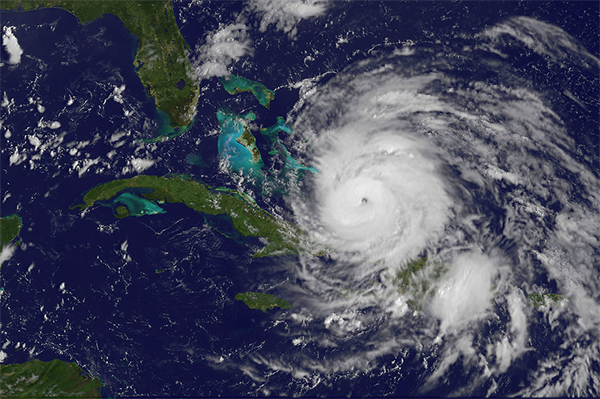In what has been an unforgettable year of natural disasters, companies have demonstrated that they intend to do their part to help devastated communities rebuild. The private sector has committed more than $300 million to date to relief efforts for Hurricanes Harvey, Irma, and Maria, and millions more in the aftermath of Mexico’s strongest earthquake in a century and the wildfires ravaging northern California.
At CECP we’ve spoken to dozens of corporate leaders who while responding to current natural disasters also want to strengthen their future strategy to create the greatest impact that they can—both for those affected as well as their companies.
While every natural disaster is different and requires a customized response, integrating the following principles into your planning can mean the difference between getting help to where it’s needed most and wasting valuable resources.
- Develop a strategy and framework that you can activate quickly.
No plan can take the needs of every future disaster into account, but having a strong process in place gives you a jump start and the ability to respond quickly, when every hour counts. Be sure to have answers to these questions now so you and your team can tackle the more important work later:
- Which factors trigger the “on switch” for your company to employ its resources? Which resources will you employ? Matching gifts programs are an effective way to engage employees, and in fact, CECP’s research shows that in 2016, nearly all companies offered a disaster relief matching gifts program to full-time employees. These funds are allocated in advance and can be flexible given the need.
- Are there others from across the company whose input you value in the decision-making process (via a disaster response advisory panel, with members in all your regions, or other structures in place)?
- Do you have key national partners to whom you turn? When necessary, which strategies will you use to find the right local partners?
Technology company Symantec has incorporated into its Disaster Response Policy a scorecard that allows it to respond swiftly (usually within 72 hours) and offer the best aid that they can. Policies such as this also provide structure to help illustrate a clear decision-making process to stakeholders, and the ability to analyze and predict resource needs for future natural disasters.
- Consider out-of-the-box resources your company can mobilize.
Companies are providing not only cash, volunteers, and products, but also expertise in many instances. Your company has skills in areas that few others have, and using these competencies can make a big difference.
Dare to be creative, and remember, sometimes the best resources we can offer come from simple ideas.
- AB-InBev repurposed breweries to can drinking water for residents displaced by Hurricane Harvey.
- Visa created a Hurricane Area Store Locator to identify merchants in hurricane-impacted areas that are open for business.
- Google’s Project Loon is providing emergency cellular service to Puerto Rico using solar-powered, high-altitude balloons.
- Following Hurricane Irma’s devastation of the U.S. Virgin Islands, Bloomberg L.P. brought much-needed supplies and a team with recovery expertise honed during New York City’s response to Hurricane Sandy.
- In New York after Hurricane Sandy, Toyota brought its production system know-how to the city’s food bank, where they helped maximize the organization’s processes to serve more individuals affected by the hurricane, and improve their overall operations.
And while early in conception, Elon Musk offered to rebuild Puerto Rico’s power grid with solar energy technology, following Hurricane Maria’s devastation of the island. It’s an enormous opportunity for Tesla to help the people of Puerto Rico, but also showcase Tesla technologies and its scalability.
CECP’s What Counts: The S in ESG features more examples of how companies have expanded their socially driven activities, tapping their unique skills and resources.
- Invest in opportunities that support long-term recovery.
Often, too few resources are committed to long-term recovery efforts, and those affected continue to struggle for years rebuilding their lives. And disadvantaged communities often suffer disproportionately. To affect a deeper and more meaningful recovery, make decisions that consider a long-term outlook:
- Lever your pro bono program to commit a limited number of employees long-term to providing expertise to recovering nonprofits in affected areas. Make it a point to check in, even months later, on the status of recovery and what needs still exist.
- Disbursing contributions over the lifespan of the response process can sometimes be more effective than providing the full contribution during the immediate relief stage.
- Community foundations are great collaborators that understand regional needs. One way you can partner is to set up a fund to support local, long-term relief projects.
While we can’t predict when or where the next natural disaster will strike, we can make a plan for how to respond. Often just having the infrastructure in place and knowing how your company can best help can make the difference between having a real impact on the lives affected and showing up with too little too late.


